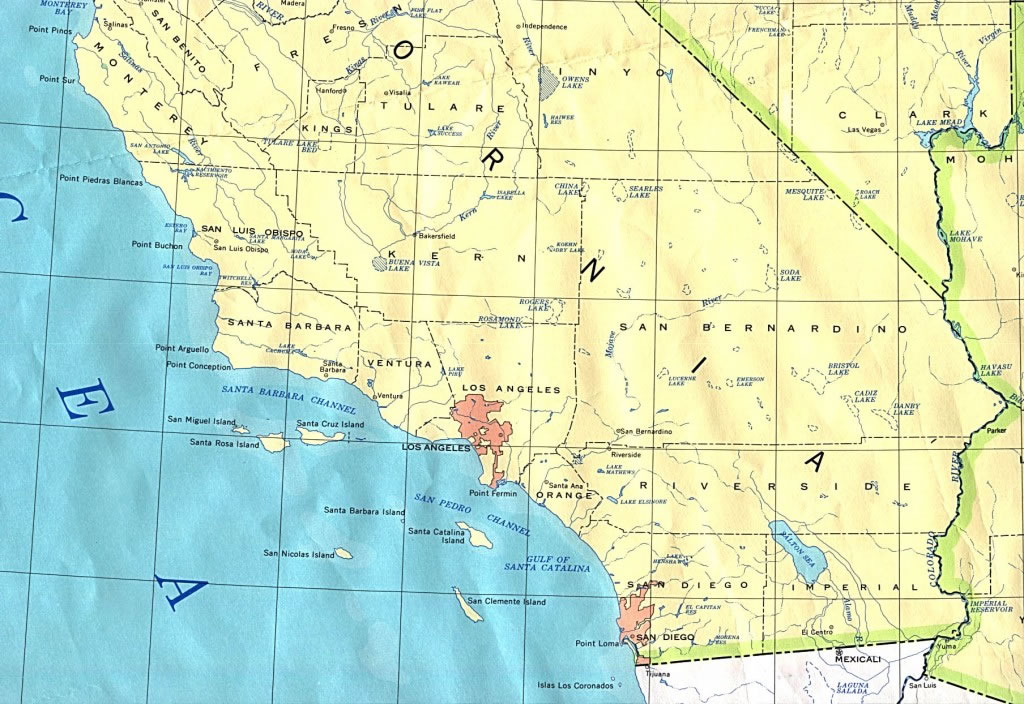California's Political Geography: Red, Blue & Purple All Over

The Public Policy Institute of California generated a recent publication geographically illustrating political trends in California. In preface to their report, the institute claims, “California has a well-earned reputation as a strongly Democratic state. But it has important, sometimes unexpected, geographic variation in ideology and opinions on specific issues.”
This study comes in time for an election when Californians will be faced with a decidedly unique election season marked by significant changes, including a new “top two” open primary and redrawn electoral districts. This report presents a number of interesting trends in the political ideologies of California residents, based on where they live in the state.
According to this report, California is a decidedly democratic state. Traditionally a divide existed between northern and southern California, with the north being more ideologically liberal than the conservative south. This trend has changed however, as every region, excluding inland California, has shifted toward the Democrats. This being said, the study found that,
“Although California votes solidly Democratic, Californians (including non-voters) hold important elements of conservative belief in most parts of the state.”
According to public opinion data, the average Californian falls in the middle of the political spectrum, leaning slightly conservative.
This is an interesting finding for a state that overwhelmingly supported Obama in the last presidential election. Political maps, showing county based voting for Obama, seem to show an even divide between Democrat and Republican voting counties across the state. In actuality, however, they fail to account for the very uneven distribution of population across California. In terms of populations, “Presidential politics now pits Los Angeles County and the Bay Area against everywhere else.” These counties account for the greatest population collectives in the state and carry California politically.
The following figure breaks up the state by examining specific issues and creating opinion based groupings of geographic regions in California. The groupings range from loyal liberal to committed conservative.
Loyal liberals seen here are found only in the Bay Area. More moderate liberals are found further south in Los Angeles County. This image goes to show that California’s largely liberal reputation is due in large part to the political climate of the Bay Area, and its population concentration.
It should be noted, however, that areas identifying as "Moderate Liberal" and "Conservative Liberal" make up half of the state's population. In an era when the two main political parties diverge so severely from one another, many of these voters who self-identify as moderate and/or centrist are missing candidates to represent them. In the open primaries in June, we could see a sizable amount of these voters reaching across the aisle, or electing to support independents despite party preference.
So what about registered independents? The report shows that the number of independents in California has doubled from 10% to 20% of the state’s registered voters. While traditionally termed “swing voters”, trends show that independents across California tend to vote more Democratic. Independent voters have proven to strengthen California’s Democratic leaning rather than challenge it.
And yet, the report determines, “Only the Bay Area is home to extraordinarily large numbers of people who hold opinions associated with the Democratic Party.” This could prove as an opportunity for Republicans and conservative independents in the upcoming election given that half of the state is sympathetic to conservative ideals.
“Given the inherent tensions between ideology and partisanship in much of California, the political geography that emerges after the election could look very different from the current landscape.”
We're seeing the data illustrated in the report manifest itself in multiple state and federal races this election cycle. As IVN previously covered, the race in Congressional District 24 could be close. While Democratic incumbent Rep. Lois Capps has performed well in the past, new district lines complicate holding onto her seat. The district is now considered a toss-up and the insights on political leanings, especially for independent voters in the region, is even more relevant as we barrel our way to an open primary season. Could the district perhaps go for former Lt. Gov. Abel Maldonado, or perhaps newcomer Matt Boutté, who is running independently? Other districts are prime for nonpartisan candidates to take advantage of the complexities found in California's political geography.





